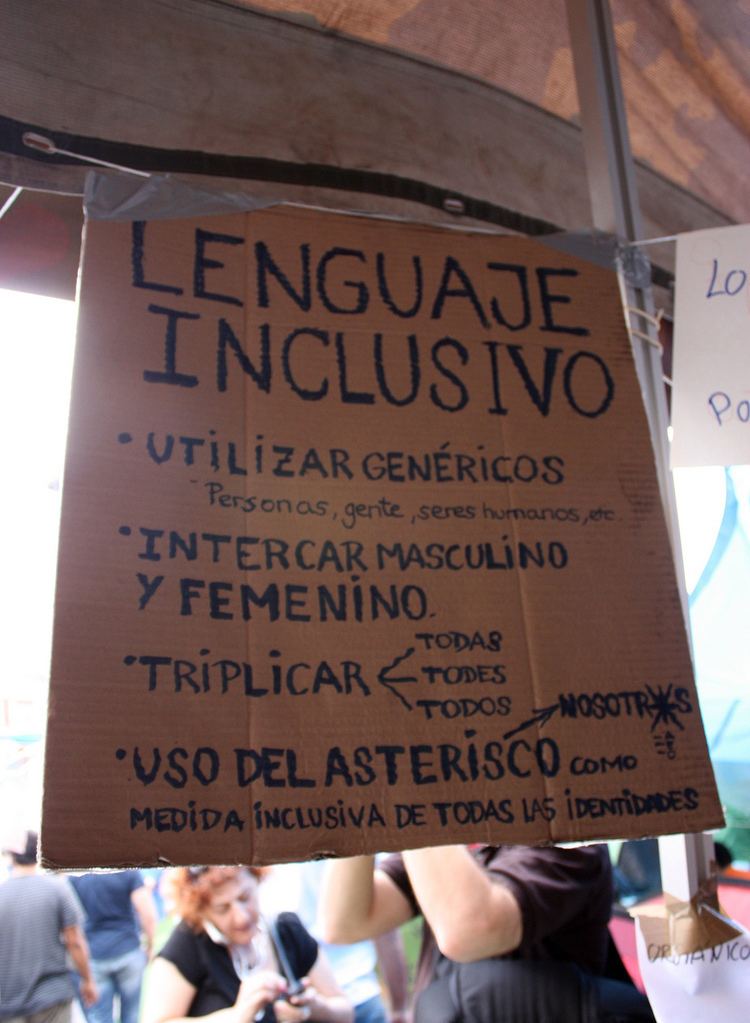 | ||
Gender-neutral language or gender-inclusive language is language that avoids bias toward a particular sex or social gender. In English, this includes use of nouns that are not gender-specific to refer to roles or professions, as well as avoidance of the pronoun he (including the forms him and his) to refer to people of unknown or indeterminate gender. For example, the words policeman and stewardess are gender-specific; the corresponding gender-neutral terms are police officer and flight attendant. Other gender-specific terms, such as actor and actress, may be replaced by the originally male term; for example, actor used regardless of gender. Some terms, such as chairman, that contain the component -man but have traditionally been used to refer to persons regardless of sex are now seen by some as gender-specific. When the gender of the person referred to is unknown or indeterminate, a gender-specific pronoun such as he may be avoided by using a gender-neutral pronoun – possibilities in English include he or she, s/he, or singular they.
Contents
General
Historically, the use of masculine pronouns in place of generic was regarded as non-sexist, but various forms of gender-neutral language became a common feature in written and spoken versions of many languages in the late twentieth century. Feminists argue that previously the practice of assigning masculine gender to generic antecedents stemmed from language reflecting "the prejudices of the society in which it evolved, and English evolved through most of its history in a male-centered, patriarchal society." During the 1970s, feminists Casey Miller and Kate Swift created a manual, The Handbook of Nonsexist Writing, on gender neutral language that was set to reform the existing sexist language that was said to exclude and dehumanize women. In the 1980s, many feminist efforts were made to reform the androcentric language. It has become common in academic and governmental settings to rely on gender-neutral language to convey inclusion of all sexes or genders (gender-inclusive language).
The traditional use of the word "man" to encompass all of humankind is seen to be outdated. Using gender-neutral language is now considered good practice in professional writing. A professor at Seton Hill University explains that the use of gender neutral language is important because commonly used phrases or occupational titles "unnecessarily exclude women." The use of gender-neutral language boosts effective communication by including all possible readers, making the message more accessible.
Various languages employ different means to achieve gender neutrality:
Other particular issues are also discussed:
Gender emphasis
There are different approaches in forming a "gender-neutral language":
Examples of gender emphasis in occupational titles:
